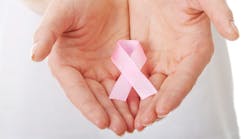Eating disorders: A review of what’s new for oral health care professionals
Eating disorders such as anorexia nervosa (AN), bulimia nervosa (BN), and binge eating disorder (BED) may affect up to 24 million Americans. Although these disorders are much more common in women, men account for up to 15% of people with an eating disorder. (1) Most common is BED, followed by BN and AN respectively. (2)
In 2013, information on eating disorders in Fifth Edition of the Diagnostic and Statistical Manual of Mental Disorders (DSM-5) was revised. The changes are intended to improve clinical utility. The most significant change was creating a new diagnostic category for BED. Binge eating disorder symptoms are:
- Frequent episodes of consuming very large amount of food but without behaviors to prevent weight gain, such as self-induced vomiting;
- A feeling of being out of control during the binge eating episodes;
- Feelings of strong shame or guilt regarding the binge eating;
- Indications that the binge eating is out of control, such as eating when not hungry, eating to the point of discomfort, or eating alone because of shame about the behavior. (3)
BN is similar to BED, but also includes purging (i.e., self-induced vomiting) to avoid weight gain. (2) AN is the most hazardous eating disorder, as it has the highest mortality rate of any psychiatric condition. (4) The disorder causes a distorted body image, extreme dieting, a pathologic fear of becoming overweight, and severe weight loss. (2) This results in a cycle of self-starvation that may be fatal in up to 15% of cases.
READ MORE | Confessions from a dental hygiene ballerina
Refeeding recommendations
AN patients who do seek treatment are at risk for refeeding syndrome (i.e., a metabolic complication that occurs when nutritional support is given to severely malnourished patients). Current recommendations for refeeding of AN patients are conservative, starting at about 1,200 calories, to avoid refeeding syndrome, which involves potentially fatal shifts in fluids and electrolytes that may occur in malnourished patients receiving artificial nutrition. (5)
However, authors of a 2013 study hypothesized that the 1,200-calorie recommendation is too low, and a higher calorie approach would improve outcomes. (6) They concluded that higher calorie diets produced quicker weight gain in hospitalized adolescents with AN as compared with the presently recommended lower calorie diets. No cases of the refeeding syndrome were seen when phosphate supplementation was used. These findings offer additional support to the change toward more aggressive refeeding in AN. (5)
Treatment and patient outreach
The thing that connects all the eating disorders is an ongoing modification in the consumption and absorption of food. These disorders have complex and multiple causes that include genetics, neurobiological changes, and cultural influences.
Treating an eating disorder presents challenges. Psychotherapy is helpful for certain disorders and pharmaceuticals (e.g., fluoxetine) for others. Eating disorders have a very high rate of comorbidities, such as substance abuse, mood disorders, and obsessive-compulsive disorder. Obesity is a another common complication of BED.
Dental hygienists and dentists are often the first health professionals to observe signs and symptoms of disordered eating habits. (7) 89% of bulimic patients show signs of the tooth erosion usually associated with regurgitation. (8) There is a continuing education course available to enlighten you about recognition of this problem. It also reviews how to generate a dialogue for talking with a patient with a suspected eating disorder.
READ MORE | Pinpointing eating disordersABIDE (the Association of Body Image and Disordered Eating) is a UC Davis group dedicated to raising campus awareness about how society might influence one’s relationship to one’s body and to food. They offer a holistic understanding of body image and healthy eating in a context that recognizes racial, sexual, gender, (dis)ability, and class identity’s influence in the University community. (10) All of the above resources assist the oral healthcare professional in the recognition and treatment of a patient with an eating disorder.
References
1. Eating disorder statistics. National Association of Anorexia Nervosa and Associated Disorders website. http://www.anad.org/get-information/about-eating-disorders/eating-disorders-statistics/. Accessed March 16, 2015.
2. Feeding and eating disorders. American Psychiatric Association. http://www.dsm5.org/documents/eating%20disorders%20fact%20sheet.pdf. Published 2013. Accessed March 16, 2015.
3. Binge eating disorder. National Eating Disorders Association website. https://www.nationaleatingdisorders.org/binge-eating-disorder. Accessed March 16, 2015.
4. Get the facts on eating disorders. National Eating Disorders Association website. http://www.nationaleatingdisorders.org/get-facts-eating-disorders. Accessed March 16, 2015.
5. Mehanna HM, Moledina J, and Travis J. Refeeding syndrome: what it is, and how to prevent and treat it. BMJ. 2008;336:1495-98.
6. Garber AK, Mauldin K, Michihata N, Buckelew SM, Shafer MA, Moscicki AB. Higher calorie diets increase rate of weight gain and shorten hospital stay in hospitalized adolescents with anorexia nervosa. J Adolesc Health. 2013;53:579-84.
7. Information for dental practitioners. National Eating Disorders Association website. https://www.nationaleatingdisorders.org/information-dental-practicioners. Accessed March 16, 2015.
8. Dental complications of eating disorders. National Eating Disorders Association website. https://www.nationaleatingdisorders.org/dental-complications-eating-disorders. Accessed March 16, 2015.




